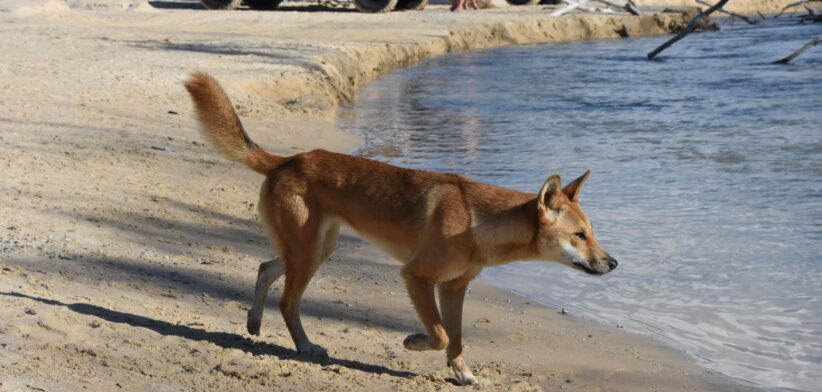Dingoes on K’gari are being seriously injured by discarded fishing equipment at an increasing rate.
Senior ranger Linda Behrendorff said the Department of Environment, Science and Innovation (DESI) was receiving regular reports about dingoes being snagged by hooks and lures or becoming tangled in fishing line.
“We’re asking every fisher who comes to K’gari to be dingo safe at all times and to be vigilant with their fishing equipment,” Dr Behrendorff said.
“Dingoes are extremely intelligent and curious, and they will approach or sit nearby fishers on the beach in hope of getting a free feed, which can include chasing your catch as you reel it in.”
Dr Behrendorff said most fishers did the right thing by chasing them away and properly discarding unused bait and fish frames by burying them at least 50 centimetres in the sand.
“Unfortunately, rangers have noticed that dingoes are accessing bait and fish frames that have not been properly buried deeply in the sand.
“During our patrols of the island, we have observed fishers ignoring dingoes that are hanging around them or their cars.
“Those dingoes have the potential to become habituated and we really need fishers to move those dingoes on by pointing and yelling get away.”
Dr Behrendorff said fishers can also make a simple adjustment to help prevent dingoes from getting hooked.
“Dingoes are getting hooked through their scavenging, sometimes hours after fishers have packed up for the day,” she said.
“Fishers need to remove all bait from their hooks when they are not in use, because the smell of baited hooks can attract dingoes into camping areas and to parked vehicles.”
“When the dingoes bite for the bait, they are getting a hook stuck in their lips or jaws.”
Dr Behrendorff said rangers were having to track and sedate dingoes to remove hooks and lures and fishing line.
“These wounds are often infected and require thorough cleaning with antiseptic liquid. The dingoes can also tear out hooks and lures themselves, which leaves them at risk of worse injuries.”








